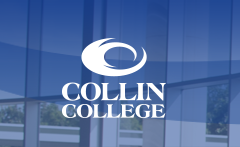Title
Presentation Type
Panel
Academic Level
2-year school
Location
Conference Room A
Abstract
Panel Chair: Lisa Roy-Davis
Papers Presented:
"Should the State of Texas Allow Public Universities and Colleges to Permit Guns on Campuses?" By Devin Walz
"Pets in the Elementary Classroom" by Anh Doan
"Technology Case Study of K-12 Students" by Cathy Tran
Abstract: Technology is an exponentially revolutionizing tool that has pushed all aspects of society to adapt and grow in the time known as the “Information Age”. The way that humans process information, and the speed at which humans can process information, with technology allows humans to grow more efficiently and effectively. Technology is continually designed to become more optimal in business environments where the amount of money and resources are dependent on the efficiently and effectiveness of product development. Similar methods of innovation using technology can be applied to public education teaching to optimize learning in the traditional grade levels of kindergarten to grade 12 (K-12). Unlike business environments, traditional education environments have been slower to adapt to the usage of technology and innovation-centered teaching. As such, a fundamental weakness of traditional education has been the inability for students to retain information learned past the duration of an academic career in K-12, as well as using standardized examinations as an only means of testing knowledge retention and comprehension of information learned through one’s academic career. The structural weakness of a traditional education environment is that it does not have the resources and the means to implement wide spread individual based teaching, whereas, technological innovations can provide individualized curriculum using artificial intelligence and machine learning. The ability for technology to learn how a user best processes information and then adapt this to the user allows for optimization of knowledge retention and eliminates the need for less efficient and effective means of measuring knowledge and performance through standardized testing.
This paper presents a case study on groups of K-12 students who are taught using innovation-centered teaching where curriculum is based on optimizing individual creative inclinations to create a simulation of product development to learn subjects that are taught in traditional classrooms. The aim of this paper is to showcase methods that teach students to communicate their ideas effectively, formulate designs, and execute ideas by tailoring curriculum to a student’s natural aptitudes; students can find more fulfillment and develop critical skills for success after their academic career.
"Millenial: Learn a Thing or Two" by Loraina Galarza
Abstract Format
html
Included in
Education Policy Commons, Legislation Commons, Public Policy Commons, Second Amendment Commons, State and Local Government Law Commons
Classrooms & Curriculum
Conference Room A
Panel Chair: Lisa Roy-Davis
Papers Presented:
"Should the State of Texas Allow Public Universities and Colleges to Permit Guns on Campuses?" By Devin Walz
"Pets in the Elementary Classroom" by Anh Doan
"Technology Case Study of K-12 Students" by Cathy Tran
Abstract: Technology is an exponentially revolutionizing tool that has pushed all aspects of society to adapt and grow in the time known as the “Information Age”. The way that humans process information, and the speed at which humans can process information, with technology allows humans to grow more efficiently and effectively. Technology is continually designed to become more optimal in business environments where the amount of money and resources are dependent on the efficiently and effectiveness of product development. Similar methods of innovation using technology can be applied to public education teaching to optimize learning in the traditional grade levels of kindergarten to grade 12 (K-12). Unlike business environments, traditional education environments have been slower to adapt to the usage of technology and innovation-centered teaching. As such, a fundamental weakness of traditional education has been the inability for students to retain information learned past the duration of an academic career in K-12, as well as using standardized examinations as an only means of testing knowledge retention and comprehension of information learned through one’s academic career. The structural weakness of a traditional education environment is that it does not have the resources and the means to implement wide spread individual based teaching, whereas, technological innovations can provide individualized curriculum using artificial intelligence and machine learning. The ability for technology to learn how a user best processes information and then adapt this to the user allows for optimization of knowledge retention and eliminates the need for less efficient and effective means of measuring knowledge and performance through standardized testing.
This paper presents a case study on groups of K-12 students who are taught using innovation-centered teaching where curriculum is based on optimizing individual creative inclinations to create a simulation of product development to learn subjects that are taught in traditional classrooms. The aim of this paper is to showcase methods that teach students to communicate their ideas effectively, formulate designs, and execute ideas by tailoring curriculum to a student’s natural aptitudes; students can find more fulfillment and develop critical skills for success after their academic career.
"Millenial: Learn a Thing or Two" by Loraina Galarza



